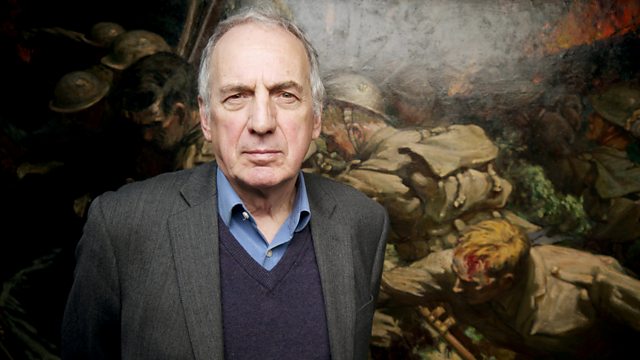
Visions of World War One
Documentary in which Kim Howells recounts how Welsh artists like Christopher Williams, Augustus John, David Jones, Bert Thomas and Margaret Lindsay Williams portrayed WWI.
Kim Howells tells the story of how Welsh artists portrayed the First World War. In the works of Christopher Williams, Augustus John and David Jones, Kim finds different sides of this terrible war to end all wars. He also discovers forgotten figures like cartoonist Bert Thomas and painter Margaret Lindsay Williams, who both produced important works of art between 1914 and 1918.
The conflict between 1914 and 1918 was the first industrialised war with tanks and machine guns, but it was also the first mass media war. In the course of four years, tens of thousands of posters and paintings were produced, many with official government approval. In a time when cinema was in its infancy and radio had yet to be born, art had a crucial role to play in portraying the war to the public back home.
This was the golden age of the poster, and three Welsh graphic artists played a leading role. Frank Brangwyn and Gerald Spencer Pryse were both commissioned by London Underground in 1914 to create more stylish recruitment posters than the boring government issue billboards. Brangwyn had been born in Belgium to a Welsh mother, while Spencer Pryse had served with the Belgian army, and they both produced dramatic works highlighting the plight of Belgian refugees.
Cartoonist Bert Thomas was born in Newport and by 1914 was well known in the comic magazine Punch. His cartoon 'Arf a Mo Kaiser was given away with cigarette packets and became the most popular illustration of the whole war. The most important Welsh battle of the First World War also produced the most important painting. The Welsh at Mametz by Christopher Williams showed soldiers of the Royal Welch Fusiliers overcoming fierce German opposition to capture Mametz Wood in the Somme, albeit at terrible cost.
Williams was sent to Mametz in the aftermath of the battle to make sketches and meet soldiers who fought there. The finished painting hung in 10 Downing Street for the remainder of the war. The poet and artist David Jones fought and was wounded at Mametz Wood, and his sketches are an important record of the life of an ordinary soldier. Many painters like Christopher Williams became official war artists, but this was a men-only club. Wales's leading woman artist, Margaret Lindsay Williams, pleaded to go to the front but wasn't allowed. Instead she painted the home front, including a superb large-scale painting of wounded soldiers at Cardiff Royal Infirmary.
The final works which Kim considers have proved the most enduring. War memorials were erected all over Wales to commemorate the 35,000 men who died during the conflict. Often designed by leading sculptors, they are a lasting testimony to this brutal war.
Last on
iWonder: How did Welsh artists tell the story of World War One?
Kim Howells explores some of the great Welsh artworks which reflect the events of WW1.

